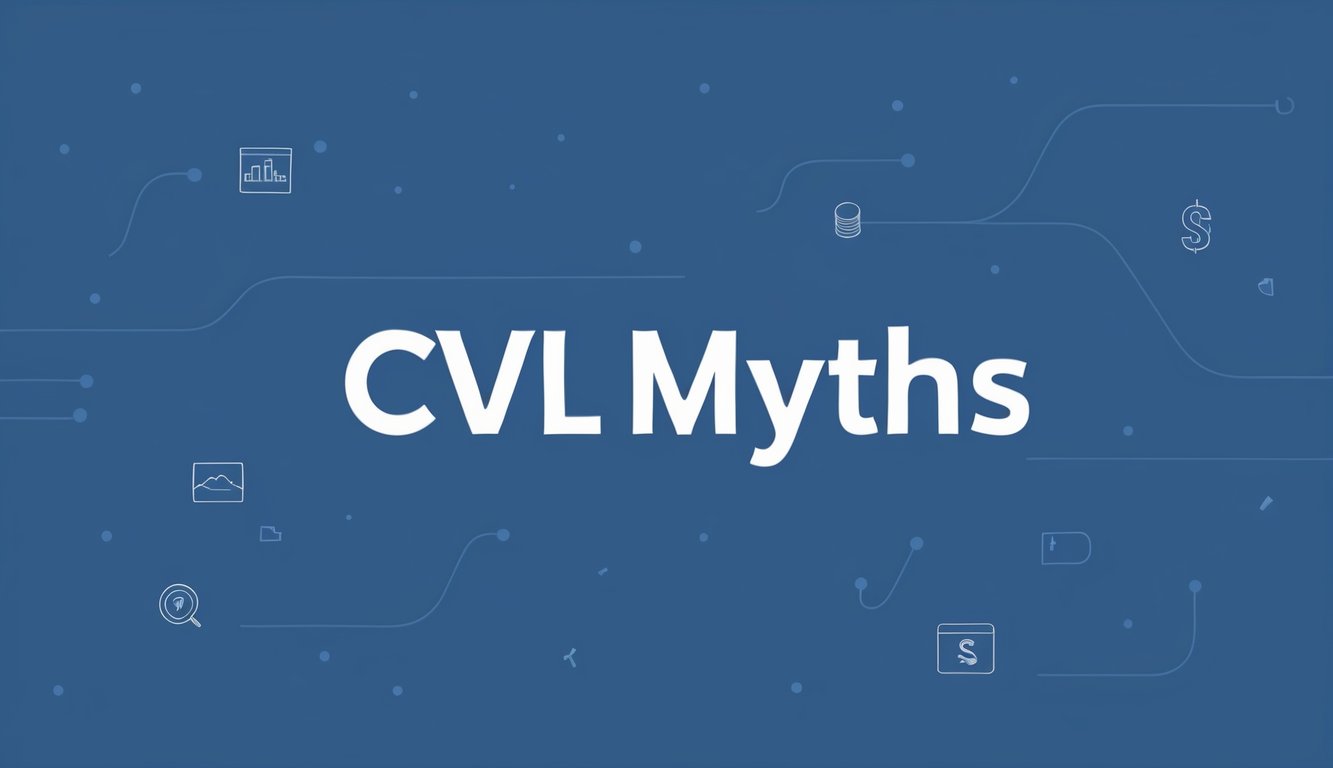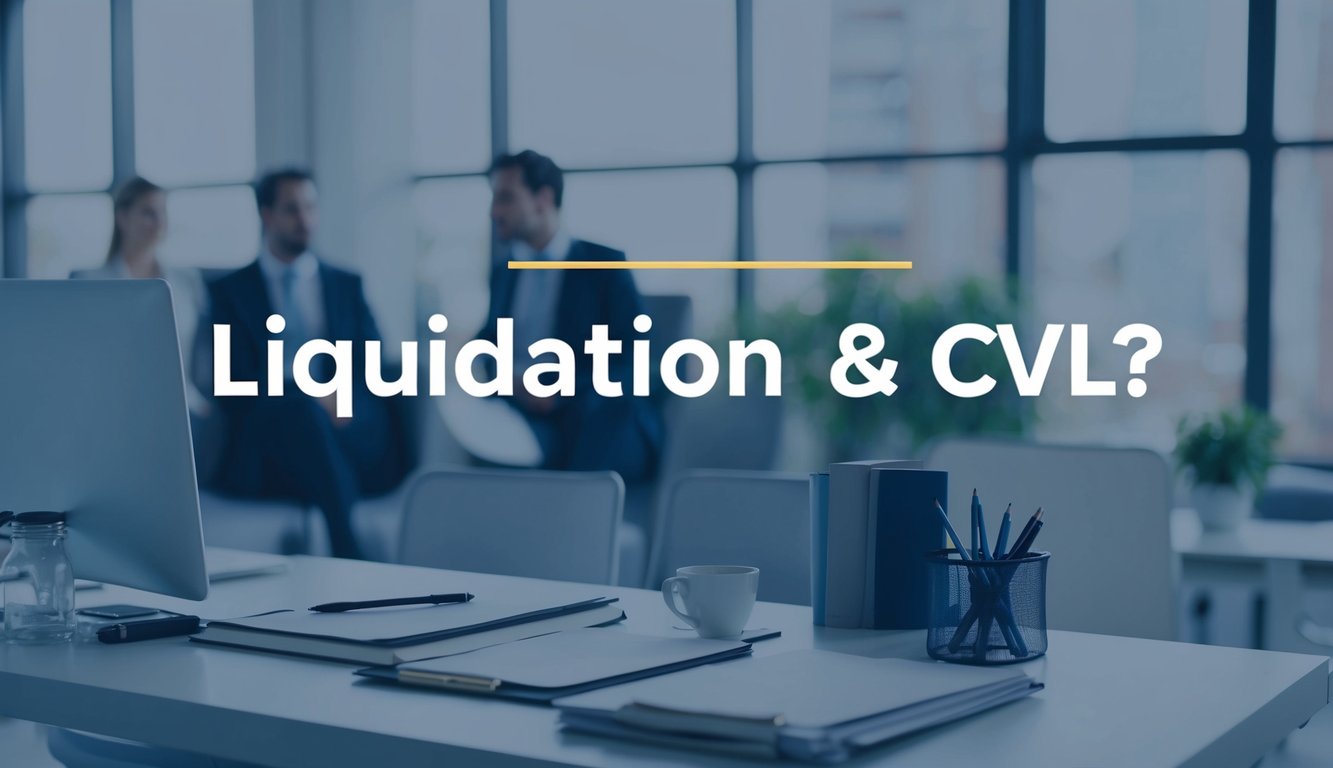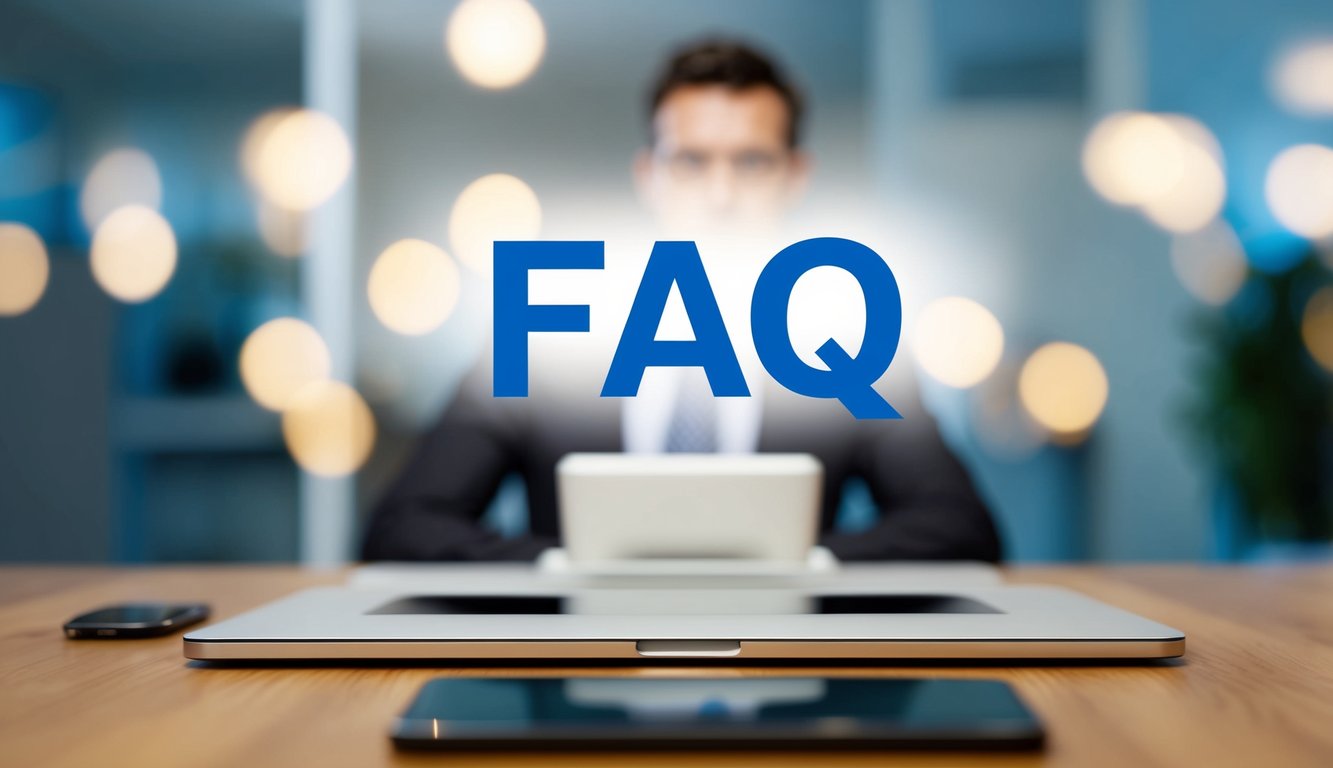Common Misconceptions About Liquidation – Separating Fact from Fiction in Company Voluntary Liquidation (CVL)
Understanding What A CVL Really Is
Creditors’ Voluntary Liquidation (CVL) is a formal insolvency procedure that allows insolvent companies to wind up their affairs voluntarily. Let’s separate fact from fiction regarding CVLs.
In this article, we will explore common misconceptions about the CVL process, providing clarity on what it entails and debunking myths that often cause unnecessary concern. This information will be particularly useful for directors of businesses facing financial challenges, as understanding the realities of CVLs can help them make informed decisions and navigate financial distress more effectively.
If you prefer you can simply speak with us and we are happy to offer a:
Free Consultation – advice@andersonbrookes.co.uk or call on 0800 1804 933 our freephone number (including from mobiles).
9 CVL Common Myths
Myth 1: CVL Means Directors Will Be Personally Bankrupt
A CVL does not automatically lead to personal bankruptcy for company directors. Your personal finances remain separate from the company’s debts in most cases.
Directors are only at risk if they’ve given personal guarantees for company debts or engaged in wrongful trading. In these situations, you might face personal liability. However, this is not a direct result of the CVL process itself.
It’s important to seek professional advice to understand your specific situation and potential risks.
Myth 2: CVL Always Results In Legal Penalties For Directors
Directors don’t automatically face legal penalties when initiating a CVL. In fact, choosing a CVL can demonstrate responsible decision-making when a company becomes insolvent.
You may face consequences if investigations reveal misconduct, such as:
- Trading whilst knowingly insolvent
- Fraudulent activities
- Failure to keep proper company records
However, if you’ve acted responsibly and in good faith, you’re unlikely to face legal repercussions. You need to cooperate fully with the liquidator and provide all necessary information to avoid potential issues.
You may also be interested in:
Quick Answers: CVL Common Myths Table Summary
|
Myth |
Fact |
| A CVL Means Directors Have Failed | A CVL is not a sign of failure. It’s often a responsible decision to address insolvency legally, protect creditors, and wind down the company properly. |
| Directors Will Automatically Be Disqualified | Disqualification only occurs if directors are found guilty of misconduct or wrongful trading. Acting transparently avoids this risk. |
| The Process Will Ruin the Director’s Reputation | Properly managing a CVL demonstrates responsibility and can preserve personal and professional credibility. |
| Insolvency Practitioners Only Work for Creditors | Insolvency practitioners are impartial and work to balance the interests of creditors and directors, ensuring compliance with UK insolvency laws. |
| A CVL Means Losing All Business Assets | Not all assets are lost. Insolvency laws aim to fairly distribute assets among creditors, and directors are often allowed to keep personal assets. |
| You Can Hide Assets to Avoid Insolvency | Attempting to hide or transfer assets is illegal and can lead to severe consequences, including criminal charges and penalties. |
| Directors Cannot Start a New Business | Directors can start new businesses, but restrictions apply if using the same or similar name as the liquidated company without meeting legal requirements. |
| Insolvency Will Ruin My Credit Forever | Insolvency affects credit ratings but doesn’t ruin them permanently. Credit can be rebuilt after discharge by demonstrating good financial management. |
| Insolvency Is Always Due to Poor Management | Insolvency is often caused by external factors, such as economic downturns, unexpected costs, or market changes, not just financial mismanagement. |
| You Can’t Recover From Insolvency | Many directors successfully recover, start new businesses, and rebuild after a CVL. Insolvency can be a valuable learning experience and an opportunity for growth. |

Addressing Misconceptions About The CVL Process
Creditors’ Voluntary Liquidation (CVL) is often misunderstood. Several myths persist about creditor involvement, the nature of the process, and which companies can use it.
Myth 3: Creditors Have No Say In A CVL
As a director navigating the CVL process, it’s important to understand the role that creditors play. While it may seem like creditors have limited influence, they are actually involved in several key aspects of the liquidation.
Creditors have the opportunity to vote on important decisions, such as the appointment of the liquidator. They may also choose to form a liquidation committee, which allows them to stay informed and provide input throughout the process.
It’s not uncommon for creditors to request updates on the progress of the liquidation or to raise concerns about specific actions. They also have the right to approve the liquidator’s fees, ensuring that the costs are reasonable and justified.
While this level of involvement may seem daunting, it ultimately serves to create a more transparent and accountable process. By understanding the rights and responsibilities of creditors in a CVL, directors can better prepare themselves and their companies for the challenges ahead.
Myth 4: CVL Is The Same As Compulsory Liquidation
CVL and compulsory liquidation are distinct processes. In a CVL, the company’s directors initiate the liquidation voluntarily. This allows for more control over the timing and choice of liquidator.
Compulsory liquidation, on the other hand, is forced upon a company by creditors or other parties through a court order. It often results from unpaid debts or legal disputes.
CVL typically offers a smoother, more cooperative process. It can lead to better outcomes for both the company and its creditors, as there’s often more time to plan and negotiate.
Myth 5: Only Large Companies Use CVL
CVL is not exclusive to large corporations. In fact, many small and medium-sized enterprises (SMEs) opt for this process when facing financial difficulties.
The flexibility of CVL makes it suitable for businesses of all sizes. It can be a practical option for:
- Family-run businesses
- Sole traders transitioning to limited companies
- Start-ups that haven’t achieved profitability
CVL can offer a dignified exit strategy for smaller companies, allowing directors to fulfil their legal obligations and potentially preserve their business reputation for future ventures.
Financial Myths About CVL
Creditors’ Voluntary Liquidation (CVL) often sparks financial concerns amongst company directors. Let’s examine two common misconceptions about the costs and personal liability involved in this process.
Myth 6: CVL Costs Too Much For Small Businesses
Many small business owners worry that CVL is financially out of reach. In reality, the costs can be quite manageable.
Liquidators typically offer flexible payment options. You might be able to pay fees from company assets or in instalments. Some liquidators even provide free initial consultations.
The actual cost varies based on the complexity of your case. Simple liquidations can start from as little as £3,000 to £5,000. More complex cases may cost more, but the fees are often offset by the financial relief CVL provides.
Remember, continuing to trade while insolvent can lead to far greater costs in the long run. CVL can be a cost-effective solution to resolve overwhelming debts.
Myth 7: Directors Must Cover All Business Debts Personally
This myth often causes unnecessary stress for company directors. In most cases, you won’t be personally liable for company debts in a CVL.
Limited company structures protect directors’ personal assets. Your liability is typically limited to the value of your shares in the company.
There are exceptions:
- Personal guarantees on loans or leases
- Fraudulent or wrongful trading
- Overdrawn director’s loan accounts
These situations might lead to personal liability. However, they’re not the norm in most CVLs.
Seek professional advice early – contact us today for totally FREE ADVICE – CALL 0800 1804 933
An insolvency practitioner, Like Anderson Brookes, can help you understand your specific situation and potential liabilities.
advice@andersonbrookes.co.uk or call on 0800 1804 933
Legal and Ethical Myths Surrounding CVL
Creditors’ Voluntary Liquidation (CVL) is often misunderstood, leading to misconceptions about its legal and ethical implications. These myths can deter companies from pursuing a potentially beneficial option during financial distress.
Myth 8: CVL Is A Loophole To Avoid Debt
CVL is not a means to escape financial obligations. It’s a lawful process designed to wind up insolvent companies in an orderly manner. Directors must act in creditors’ best interests throughout the procedure. The liquidator investigates the company’s affairs and directors’ conduct. Any attempts to hide assets or defraud creditors are illegal and can result in severe penalties.
Creditors have the right to challenge transactions made before liquidation if they appear suspicious. Directors may be held personally liable for certain debts if they’re found to have acted improperly. CVL aims to maximise returns for creditors, not to help directors evade responsibilities.
Myth 9: Directors Can Be Jailed For Insolvency
Insolvency alone is not a criminal offence in the UK. Directors won’t face imprisonment simply because their company becomes insolvent and enters CVL. However, certain actions during or before insolvency can lead to legal consequences.
Criminal charges may arise if directors:
- Commit fraud
- Falsify company records
- Deliberately mislead creditors
- Continue trading whilst knowingly insolvent
It’s important to seek professional advice early and act responsibly throughout the CVL process. Directors who cooperate fully with liquidators and have not engaged in misconduct have no reason to fear legal repercussions. Transparency and honesty are key to avoiding any potential legal issues during liquidation.
How To Get The Facts Straight About CVL
Accurate information is very important when considering a Creditors’ Voluntary Liquidation (CVL). Seeking reliable sources and professional advice can help you navigate the process effectively.
Reliable Sources Of Information On CVL
Government websites, such as GOV.UK, offer trustworthy information on CVL procedures. These official sources provide up-to-date guidelines and regulations.
Industry associations and professional bodies like R3 (Association of Business Recovery Professionals) publish helpful resources and guides on insolvency matters.
Reputable insolvency practitioners’ websites often feature detailed articles and FAQs about CVL. Look for firms with established track records and positive client testimonials.
Legal databases and professional journals can provide in-depth analysis of CVL cases and precedents. These sources are particularly useful for understanding complex aspects of liquidation.
Why Professional Advice Is Essential
Every CVL case is unique, and generic information may not address your specific situation. A licensed insolvency practitioner can offer tailored advice based on your company’s circumstances.
Professionals stay current with changing regulations and can guide you through the latest legal requirements. This expertise helps ensure compliance and minimises potential risks.
Insolvency practitioners can assess your company’s financial position accurately. They’ll help you understand the implications of CVL and explore alternative options if available.
Professional advice can protect directors from personal liability issues. Practitioners will explain your duties and responsibilities throughout the liquidation process.
How Anderson Brookes Helps Clarify The CVL Process
Anderson Brookes offers expert guidance and transparent advice to help businesses navigate the Creditors’ Voluntary Liquidation (CVL) process. Their approach aims to dispel common myths and provide clarity for directors facing financial difficulties.
Debunking Misconceptions Through Expert Guidance
Anderson Brookes’ team of specialists works directly with company directors to address misconceptions about CVL. They explain that the process isn’t always costly or complex, contrary to popular belief. Their experts guide you through each step, ensuring you understand the implications and benefits.
The firm provides clear timelines and outlines potential outcomes, helping you make informed decisions. They emphasise that CVL can be a responsible choice for insolvent companies, protecting creditors and limiting further financial damage.
Anderson Brookes also clarifies the role of liquidators, explaining how they can efficiently manage the process to minimise costs and disruptions.
Providing Transparent And Honest Advice
Transparency is at the core of Anderson Brookes’ approach to CVL. They offer honest assessments of your company’s financial situation, helping you understand whether liquidation is the best option. Their advisors explain the alternatives, such as administration or company voluntary arrangements, ensuring you’re aware of all possibilities.
Anderson Brookes provides detailed breakdowns of the CVL process, including:
- Initial consultation and decision-making
- Appointment of liquidators
- Asset realisation and distribution to creditors
- Company dissolution
They also clarify the legal obligations and protections for directors during CVL, addressing concerns about personal liability. This open communication helps build trust and allows you to proceed with confidence.
CVL Google Reviews

&

Questions? Speak to an expert today! 0800 1804 933
Frequently Asked Questions
Creditors’ voluntary liquidation (CVL) can be a complex process with many nuances. Understanding the key aspects helps dispel common misconceptions and provides clarity for business owners facing financial difficulties.
What distinguishes creditors’ voluntary liquidation from compulsory liquidation?
CVL is initiated by the company directors, whilst compulsory liquidation is court-ordered. CVL allows for a more controlled wind-down of the business, potentially resulting in better outcomes for creditors.
Directors have more say in appointing the liquidator in a CVL. This process often moves faster than compulsory liquidation, reducing stress and uncertainty for all parties involved.
What are the primary reasons a company would enter into a CVL?
Insolvency is the main driver for a CVL. When a company cannot pay its debts as they fall due or its liabilities exceed its assets, directors may opt for CVL to protect creditors’ interests.
Other reasons include ongoing financial losses, pressure from creditors, and the desire to close the business in an orderly manner. CVL can also be chosen to avoid potential wrongful trading allegations.
Are there any misconceptions about the financial implications of liquidation for directors?
Many directors believe they’ll be personally liable for all company debts post-liquidation. This isn’t always true. Directors are typically only liable if they’ve provided personal guarantees or engaged in wrongful trading.
Another misconception is that liquidation always leads to bankruptcy. In reality, CVL can help directors avoid personal financial ruin if handled properly and in a timely manner.
Is it possible for a company to halt a creditors’ voluntary liquidation once it has started?
Once a CVL has commenced, it’s challenging to halt the process. However, it’s not entirely impossible in rare circumstances. If the company’s financial situation improves dramatically or new funding becomes available, the liquidation might be stopped.
This would require the agreement of creditors and approval from the court. We should note that such scenarios are extremely uncommon.
How does a CVL affect employees and what rights do they have during the process?
Employees are typically made redundant when a company enters CVL. They become preferential creditors for certain claims, such as unpaid wages and holiday pay, up to specified limits.
Employees can claim redundancy pay, unpaid wages, and other entitlements from the National Insurance Fund. The liquidator will provide necessary information and assist with these claims.
Can a business recover after undergoing a creditors’ voluntary liquidation?
Once a company has gone through CVL, it ceases to exist and cannot recover in its current form. However, directors may start a new company, sometimes purchasing assets from the liquidated business.
This process, known as a ‘phoenix’, is legal if done correctly. Directors must be cautious to avoid allegations of wrongful trading or misconduct in the previous company.
See further CVL FAQs or our Insolvency Glossary for more answers.






